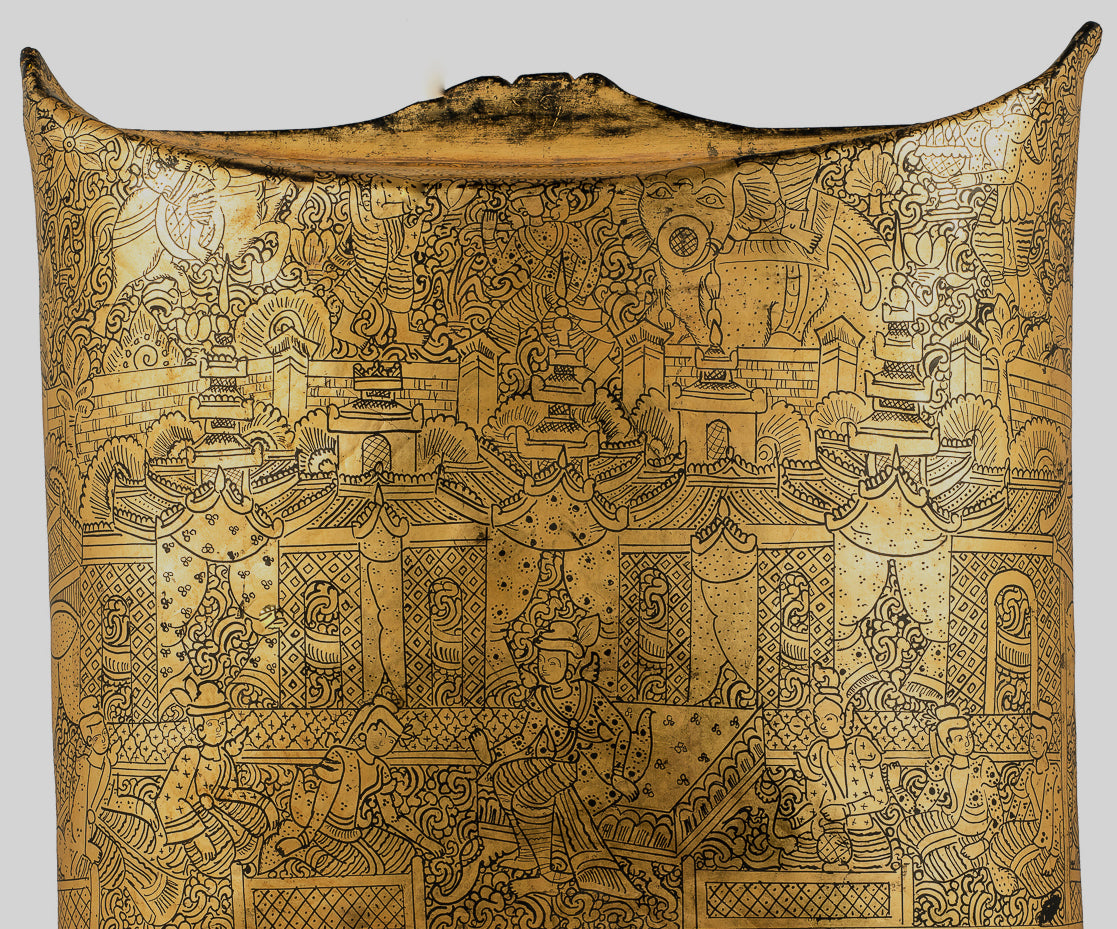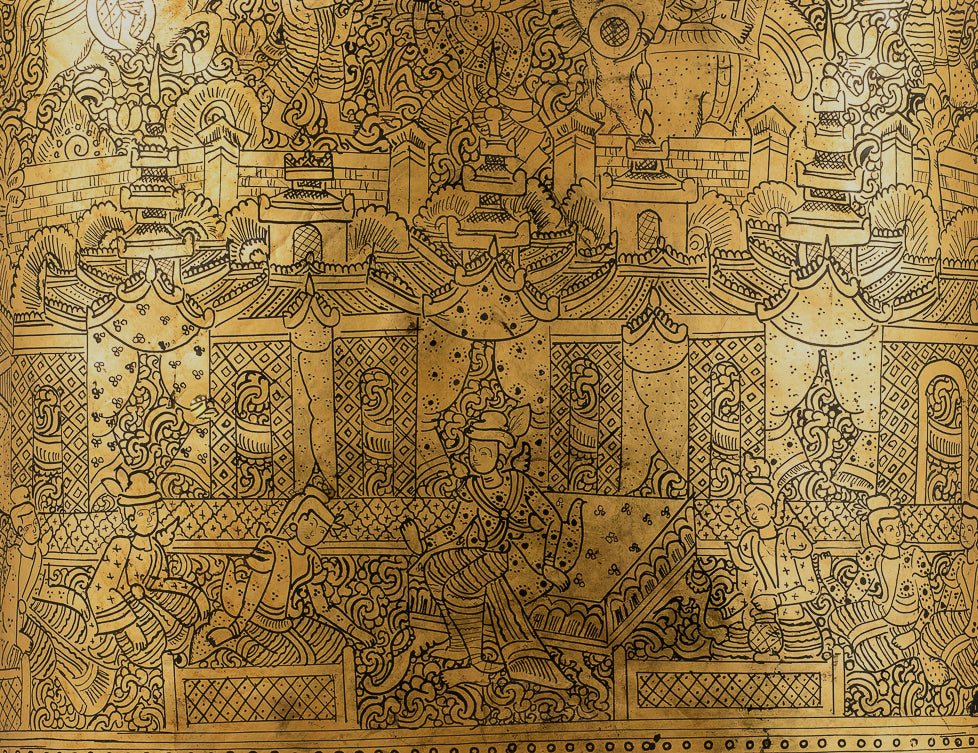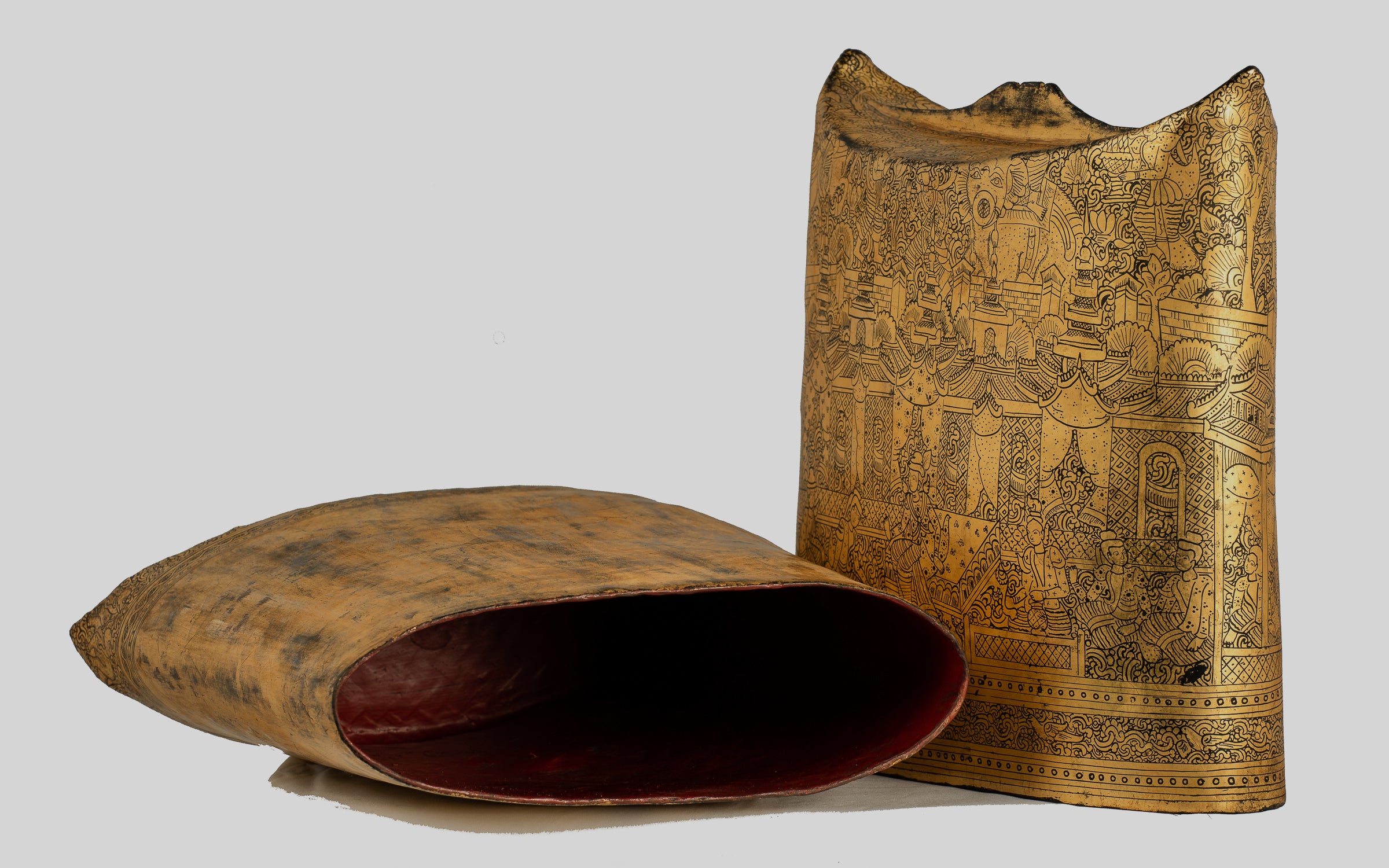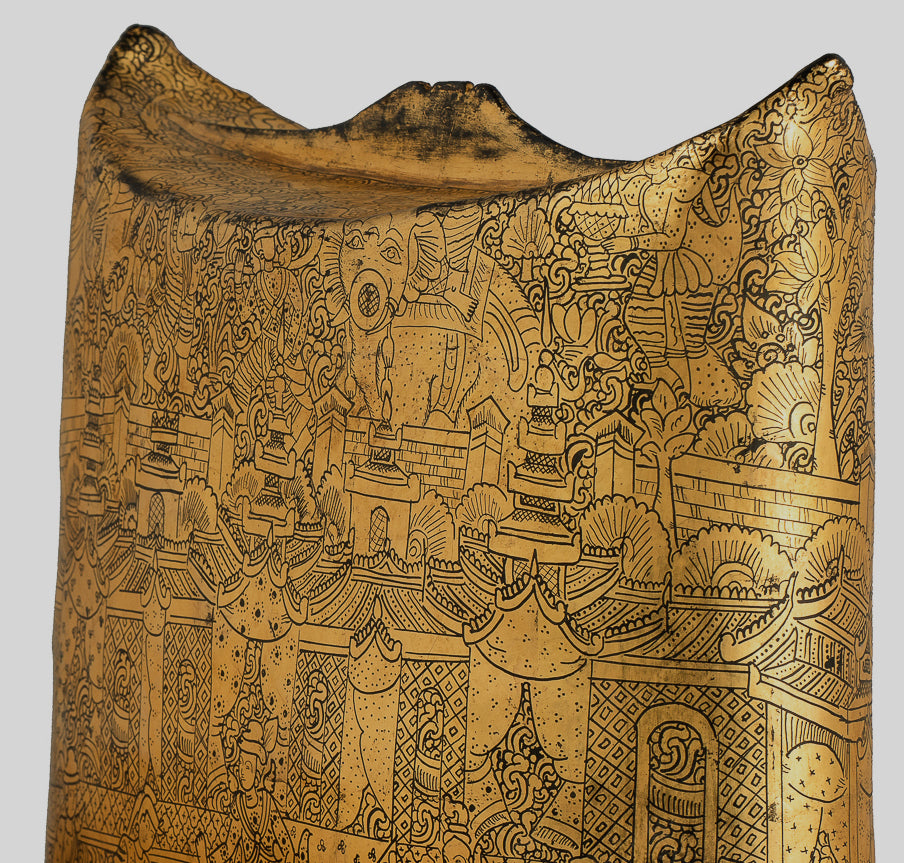-
Antique 19th Century Burmese Lacquerware Money Holder - 33cm/13" Long
Measurements - Length 33cm (13")
Ca. 19th century Burmese lacquerware money holder or pouch. This two piece pouch is decorated with a traditional Burmese motif and would have been used to hold and transport money.
The pouch features a traditional Burmese motif of court life, depicting cortiers and white elephants.
The pouch is decorated in traditional shwe zawa black and gold style.
The delicacy of the gilt work, excellent condition and overall style of the piece is very unusual.
This box is made of lacquered woven bamboo.
Provenance: Private UK collection. All items are guaranteed to be as described. A Certificate of Authenticity will accompany all purchases upon request.
This traditional in appearance piece is sure to add a unique touch to any room of your home or workplace.
SATISFACTION GUARANTEE - We have been offering SE Asian Art for many years and are proud of the reputation we have developed for fair and honest listings. However, if for any reason, whatsoever, you are unhappy with your purchase please just let us know and we will provide a full refund. We want you to be 100% happy with your purchase.
-
The majority of orders will be shipped with DHL. This is a secure, express and fully tracked service.
Items less than 2Kg we typically ship using Royal Mail.
Once we receive your order we try to ship all orders the same or next working day.
Large and/or fragile pieces requiring palletising, specialist crating and/or extra packaging may take a little longer. Palletised shipments will be delivered curbside.
All orders over 35 GBP will be shipped free of charge.

-
We genuinely hope that all purchases delight.
However, if they do not, regardless of reason, we will refund all orders upon receipt of the unwanted item. Just notify us within 14 days of receiving your order that you wish to make a return and send the piece back to us with 30 days of delivery.
Let Us Help You Find The Piece You Desire
What Our Customers Think
... the vishnu statue is amazing and many thanks again for the little buddha that is on my working desk.
Philippe, Paris, France
Just received my Durga....it's so beautiful...thank you.
Melainee, London, UK
As you know I purchased the Ganesh, last month, for luck, well... out of 25 applicants, and 7 candidates, I've been offered a job as a teaching assistant! So thank you for being part of my journey!!!
Nisha, Croydon, UK






















